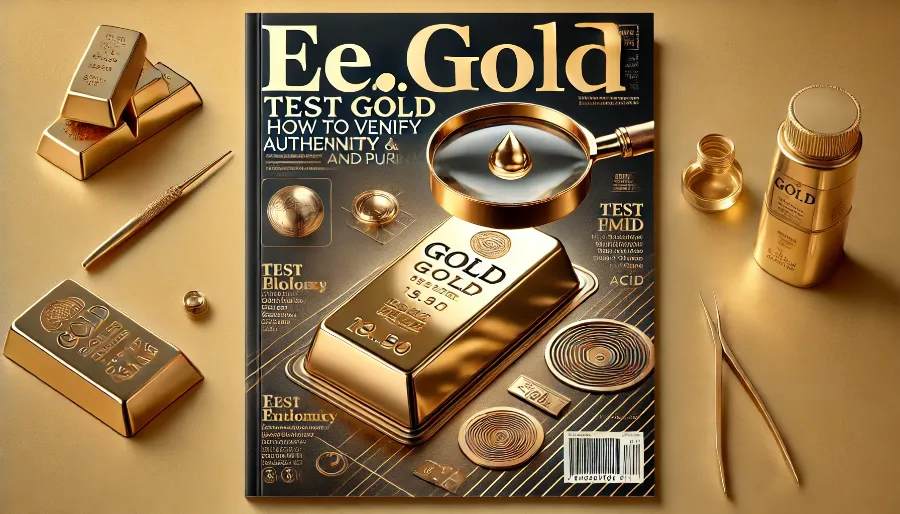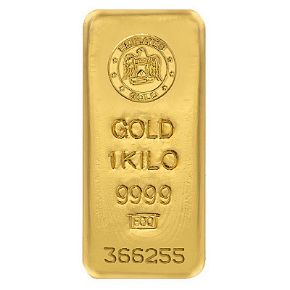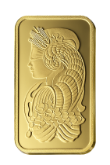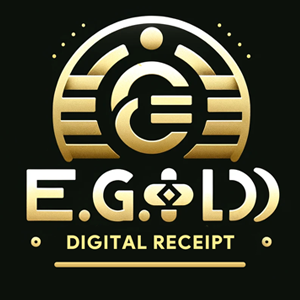
Gold is one of the most valued and traded precious metals in the world, but not all gold is created equal. Knowing how to test gold is essential to ensure you're purchasing or owning genuine, high-quality gold. Whether you're an investor, jeweler, or just a curious owner of gold items, understanding how to verify gold’s authenticity and purity will save you time, money, and trouble.
Why Testing Gold is Important
Fake gold and gold-plated items are common in the market, making it essential to verify the authenticity of any gold product. Testing gold ensures:
- Authenticity: Detects whether the gold is real or counterfeit.
- Purity: Determines the karat value (e.g., 10K, 14K, 18K, 22K, 24K).
- Fair Value: Ensures you're paying the correct price for the item.
- Avoiding Scams: Protects against fraud and substandard gold products.
Common Ways to Test Gold
Gold testing can be done using simple at-home methods or more advanced techniques used by professionals. Let’s explore the most common ways to test gold.
At-Home Gold Testing Methods
1. The Magnet Test
Gold is not magnetic, so testing your item with a magnet is a quick way to detect fake gold.
How to Do It:
- Use a strong magnet (e.g., neodymium magnet).
- Hold the magnet near your gold item.
- If the item is attracted to the magnet, it’s likely not real gold.
Limitations: Some non-magnetic metals can still be gold-plated, so this test alone isn’t conclusive.
2. The Float Test
Gold is denser than water and will sink when placed in it.
How to Do It:
- Fill a bowl with water.
- Drop your gold item into the water.
- If it floats, it’s likely fake. Real gold will sink.
Limitations: This test doesn’t confirm gold purity or detect gold plating.
3. The Scratch Test
Real gold is soft and can leave a distinct mark on ceramic.
How to Do It:
- Use an unglazed ceramic plate or tile.
- Gently drag the gold item across the surface.
- If it leaves a gold mark, it’s real. If it leaves a black or green mark, it’s fake.
Limitations: This method can damage your gold item.
4. The Acid Test
This method uses a nitric acid solution to test gold’s reaction.
How to Do It:
- Purchase a gold testing kit with acid solutions for different karat values.
- Apply a small drop of acid to a scratch or inconspicuous area of the gold.
- Observe the reaction:
- No reaction = real gold.
- Reaction (e.g., green or bubbling) = fake or plated gold.
Limitations: This test can damage your gold item if not performed carefully.
5. The Bite Test
Biting into gold is an old trick to test its softness. Real gold is malleable and may show bite marks.
How to Do It:
- Gently bite down on the gold item.
- Look for slight dents from your teeth.
Limitations: This method is not accurate and can damage both your gold and your teeth.
Professional Gold Testing Methods
For more accurate results, consider professional methods:
1. X-Ray Fluorescence (XRF) Spectrometry
This is a non-invasive test that uses X-rays to determine gold purity.
How It Works:
- The XRF device scans the gold item.
- It provides a detailed report on the gold’s composition and karat value.
Benefits: Highly accurate and non-destructive.
2. Fire Assay Test
Considered the most accurate method, this test involves melting the gold to analyze its purity.
How It Works:
- A sample of the gold is melted and mixed with other materials.
- The impurities are separated, leaving pure gold behind.
Limitations: This method is destructive and requires specialized equipment.
3. Electronic Gold Testing
Electronic gold testers measure gold purity using conductivity or resistivity.
How It Works:
- The device probes the gold item and provides a karat reading.
Benefits: Accurate and easy to use for jewelers and professionals.
How to Identify Gold Purity (Karat Values)
Gold purity is measured in karats, with 24K being the purest form. Here’s how karats break down:
- 24K Gold: Pure gold (99.9%). Soft and not used for most jewelry.
- 22K Gold: 91.7% pure gold. Common for jewelry in Asia and the Middle East.
- 18K Gold: 75% pure gold. Durable and popular for fine jewelry.
- 14K Gold: 58.3% pure gold. Common in the U.S. and ideal for everyday wear.
- 10K Gold: 41.7% pure gold. The least pure gold allowed to be labeled as gold in the U.S.
You can identify gold purity by looking for hallmarks or stamps on the item, such as “24K,” “18K,” or “750.”
Common Signs of Fake Gold
If you’re uncertain about your gold’s authenticity, look for these red flags:
- Lack of hallmarks or karat stamps.
- Discoloration, especially in areas of wear.
- Magnetic properties.
- Signs of peeling or flaking, which indicate gold plating.
- Unusually light weight compared to genuine gold.
Where to Test Gold
- At Home: Use simple methods like the magnet or float test for quick checks.
- Jewelry Stores: Many jewelers offer professional gold testing services.
- Assay Labs: For the highest accuracy, send your gold to a certified testing laboratory.
- Pawn Shops: Pawn shops often test gold before making offers, but their methods may vary.
FAQs About Testing Gold
1. Can I test gold at home without damaging it?
Yes, non-invasive methods like the magnet or float test can be done safely at home.
2. Is it possible for gold to pass a magnet test but still be fake?
Yes, some non-magnetic metals can mimic gold’s properties, so additional tests are recommended.
3. How much does professional gold testing cost?
Costs vary depending on the method, but basic tests at jewelry stores are often free or inexpensive.
4. Can gold-plated items pass a gold test?
Some tests may not detect gold plating, so it’s important to use multiple methods.
5. What’s the most accurate way to test gold?
The fire assay test is the most accurate but is also destructive. XRF spectrometry offers non-destructive accuracy.
Advanced Tips for Testing Gold
To gain deeper insights into the authenticity and quality of your gold, here are advanced tips and tricks that combine precision with ease of use:
Use a Loupe or Magnifying Glass
Gold jewelry often carries tiny hallmarks or stamps that indicate its karat value and authenticity. These marks can include “24K,” “18K,” “14K,” or purity numbers like “999” (for 24K gold) or “750” (for 18K gold).
How to Check:
- Use a jeweler’s loupe or a high-quality magnifying glass.
- Inspect the inside of rings, back of pendants, or hidden areas for a hallmark or stamp.
- If no markings are present, the item may be fake or gold-plated.
Note: Counterfeit gold can sometimes have fake hallmarks, so combine this step with other testing methods.
Test for Weight and Density
Gold is a dense metal, and its weight relative to its size can be a clear indicator of authenticity.
How to Test:
- Use a precise digital scale to weigh your gold item.
- Measure its volume using water displacement (e.g., submerging it in water and measuring the rise).
- Calculate its density: Divide the weight by the volume.
- Pure gold has a density of approximately 19.3 g/cm³.
Note: Items with a density significantly lower than 19.3 g/cm³ are likely to be fake or gold-plated.
Check for Wear and Discoloration
Fake gold or gold-plated items often reveal their true nature over time, especially in areas that are frequently touched or exposed to friction.
- Signs of Fake Gold:
- Peeling or flaking that exposes a different metal underneath.
- Discoloration in areas like edges, clasps, or where the item touches the skin.
- Green or black marks on the skin after wearing the item, indicating it’s not real gold.
Real gold doesn’t tarnish, peel, or discolor over time.
Use a Gold Testing Kit
Gold testing kits are affordable and reliable tools for determining gold purity. They include acids for different karat values, testing stones, and instructions for safe use.
Steps for Acid Testing:
- Scratch the gold item gently on the provided testing stone.
- Apply a drop of acid corresponding to the karat value (e.g., 14K acid for 14K gold).
- Observe the reaction:
- If the scratch dissolves, the gold is lower than the tested karat.
- If no reaction occurs, the gold matches or exceeds the tested karat.
Precautions: Handle acids carefully and wear gloves for protection.
Seek a Professional Appraisal
If you’re still unsure about your gold’s authenticity, consult a professional jeweler or appraiser. Professionals use advanced tools like XRF spectrometers and ultrasonic testers to determine the composition and value of gold without damaging it.
- Benefits:
- Guaranteed accuracy.
- Expert insight into the item’s market value and origin.
- Certificates of authenticity for valuable pieces.
Understanding Gold-Plated and Gold-Filled Items
Some items may appear to be gold but are actually gold-plated or gold-filled, which affects their value and authenticity.
- Gold-Plated: A thin layer of gold is bonded to a base metal like brass or copper. Over time, the gold layer can wear off.
- Gold-Filled: A thicker layer of gold is mechanically bonded to a base metal, making it more durable than plating but less valuable than solid gold.
- Markings to Look For: Items may be stamped with “GP” (gold-plated) or “GF” (gold-filled).
Gold-plated and gold-filled items are less expensive and not suitable as long-term investments.
How to Avoid Fake Gold
Buying gold from reliable sources is essential to avoid counterfeit products. Follow these tips to ensure you’re purchasing authentic gold:
- Buy from Reputable Dealers: Purchase gold from established jewelers, licensed dealers, or certified online platforms.
- Check for Certifications: Look for hallmark stamps and certification from trusted organizations like the London Bullion Market Association (LBMA).
- Request an Appraisal: Always request a professional appraisal for high-value items.
- Be Wary of Low Prices: If the price seems too good to be true, it probably is.
Final Thoughts
Testing gold is an essential skill for anyone dealing with gold jewelry, coins, or investments. Whether you’re using at-home methods or professional tools, verifying authenticity ensures you’re getting the value you deserve. By understanding the different testing techniques, you can confidently identify real gold and avoid counterfeit products.
NOTE
This Content is the copyrighted content of EE.GOLD. All rights are reserved. You are welcome to share or use our content only by including direct links to our website. Any other form of reproduction, distribution, or use without proper attribution is strictly prohibited.
This Content is intended solely for educational purposes. The information provided does not constitute financial or investment advice.
Please note that Digital Storage Receipt, Secure Storage Solutions, and Physical Gold Sales are the only services offered by EE.GOLD.
We strictly adhere to government regulations and are firmly against all illegal financial or investment activities globally.
For further inquiries, feel free to contact us through our official channels.










.png)

